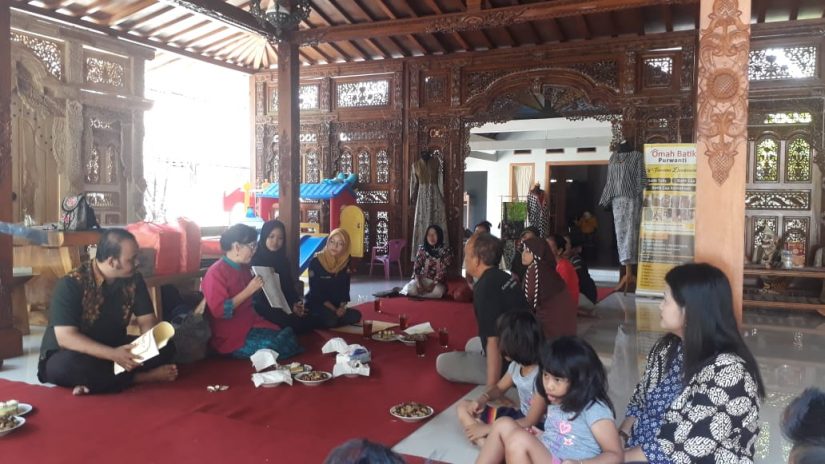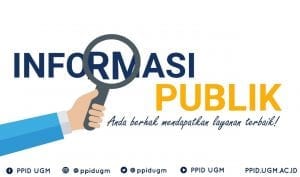
Bayat Sub-district, which belongs to Klaten Regency, is located in the southern corner of the region, bordering Gunungkidul Regency, Yogyakarta Special Region to the south, Cawas Sub-district to the east, Wedi Sub-district to the west and Trucuk Sub-district to the north. Bayat Sub-district is located in a limestone mountainous area parallel to the Gunungkidul region, so the appearance of the area is hilly and the majority of its citizens do not depend on farming, but many work as craftsmen, ranging from pottery, various kinds of stone tools, to batik cloth.
Bayat sub-district is an important region in history, even though it is not located in the center of government. This is evident from various stories about the area, many of which are associated with a figure who lived around the 16th century, named Ki Ageng Pandanaran. He was a regent of Semarang who resigned from power and chose to spread Islam under the title Sunan Tembayat in this area until the end of his life. In addition to the figure of Sunan Tembayat, this area also has many other historical figures who came from the transition of the Majapahit era to Demak Bintara, such as Seh Sabuk Janur, Ki Ageng Becik, Seh Domba, Ki Ageng Konang, Ki Ageng Menang Lase, Ki Ageng Santri, Pangeran Menangkabo and Panembahan Jiwa. They have their own stories in the context of their roles as leaders of the local community since the days of Demak, Mataram until it was split into Surakarta and Yogyakarta. This shows that this area, apart from its old age, also has its place in historical dynamics.
Bayat District has approximately ten batik industry centers with their uniqueness and specialization. Several batik production centers in the Bayat sub-district include stamped batik in Beluk Village, hand-written batik in Needle Village and Kebon Village, and lurk woven batik in Tegalrejo Village. The batik industry in Bayat has been hereditary and has become one of the regional suppliers of batik cloth to the Klewer market in Surakarta and Beringharjo in Yogyakarta several decades ago. Batik produced in the Bayat area itself has many variations, ranging from classic batik which has a characteristic color sogan for jarit or nyamping, modern batik with natural colors like indigo (indigovera), contemporary motives for consumption fashion, and the tastes of international buyers, to the combination of luck and batik in media other than fabrics such as wood batik, leather batik and so on.
As an area that is thick with historical nuances, Bayat District certainly has a lot of local wisdom, one of which is in the form of traditional songs, spells, prayers, tattoos, and wise advice that is useful for the community to address various phenomena of life in the present and anticipate things that may occur in the future. Besides that, a lot petilasan or the historical footprint of many figures from the eras of Hinduism, and Islam to the last Javanese kingdoms in this region shows that of course there will be many related folktales to be found, which apart from being able to function as a medium for historical reminders also contain various cultural values. In addition, the Bayat area has also become an important part of the history of Javanese literature, because at the gate of the tomb of Sunan Tembayat was also found the sengkalan or chronogram, titles Murti Sarira Jleging Ratu(1448) and Wisaya Hanata Wisiking Ratu(1555), whose typeface is archaic, contemporaneous with texts found in coastal areas, including Primbon Sunan Bonang which is stored in the Asian Library Library, Leiden University. These things have not been optimally exposed especially about Bayat as one of the handicraft industry centers in Klaten. Community Service (PPM) carried out by the Javanese Literature Study Program, Language and Literature Department, Faculty of Cultural Sciences, Universitas Gadjah Mada, Yogyakarta this time will focus on developing batik motifs filled with folklore and local wisdom with Javanese written media, both modern and modern Javanese styles. known today as well as the 'Sunan Tembayat style' which is depicted in ancient tomb complexes in this area.
The aim of the PPM Javanese Literature Study Program in Bayat District, Klaten Regency, which was held on July 15, 2019, was to strengthen Bayat's identity as a religious and historical tourism destination, a center for the UMKM industry (Small, Micro and Medium Enterprises) in the handicraft sector as well as one of the areas with a specific in the field of culture, besides that, it is also to form a community group that manages the potential for cultural arts and history in Bayat District, Klaten Regency.
The expected results in community service activities are Bayat District as the Study Program Foster Area, more specifically to strengthen the existence of Bayat District, Klaten Regency as an area that has a distinctive and strong-rooted cultural character.
The results obtained from the activity 'Community Service: Development of Batik Motifs Based on Folklore and Javanese Script in Bayat District, Klaten Regency' is the creation of the 'Udan Riris Majaarum' batik motif. This motif can be used by the community as a batik motif characteristic of the Needle Village, Bayat District. In addition to batik motifs outcome of this activity is the article 'Creating a New Motive for the Identity of Needle Village, Bayat District, Klaten Regency' which is planned to be published in the Bakti Budaya Journal and activity documentation.


